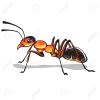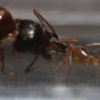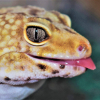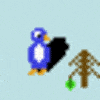- Formiculture.com
- Forums
- Gallery
- Members
- Member Map
- Chat

Crematogaster Cerasi?
Started By
Diesel
, Jan 7 2018 2:16 PM
14 replies to this topic
#1
 Offline
-
Posted January 7 2018 - 2:16 PM
Offline
-
Posted January 7 2018 - 2:16 PM
Need help IDing this queen caught in Maine in July. Size is approx 1/4 inch. She has what appears to be little spikes around where her wing scars are. Thorax and gaster are attached by a long thin segment.
Ant Species kept
Temnothorax Longispinosus.-Journal(discontinued)-(formerly)
Camponotus Noveboracensis (formerly)
Camponotus Nearticus-formerly
Tetramorium sp.-formerly
Camponotus Pennsylvanicus Queen & brood.-formerly
Tapinoma Sessile-Journal (3 queen colony)-formerly
Tapinoma Sessile #2 (2 queen colony)-formerly
Aphaenogaster Picea-Journal-active
Crematogaster sp.(Cerasi or Lineolata) Queen with 3 workers and brood-formerly
Crematogaster sp. #2 (Cerasi or Lineolata) Queen with brood-formerly
Formica sp. polygenus-active 300+ workers-active
Formica Subsericea-active 25+ workers-active
Myrmica Rubra 400+ workers 3 queens-active
#2
 Offline
-
Posted January 7 2018 - 2:17 PM
Offline
-
Posted January 7 2018 - 2:17 PM

- T.C. and rdurham02 like this
Ant Species kept
Temnothorax Longispinosus.-Journal(discontinued)-(formerly)
Camponotus Noveboracensis (formerly)
Camponotus Nearticus-formerly
Tetramorium sp.-formerly
Camponotus Pennsylvanicus Queen & brood.-formerly
Tapinoma Sessile-Journal (3 queen colony)-formerly
Tapinoma Sessile #2 (2 queen colony)-formerly
Aphaenogaster Picea-Journal-active
Crematogaster sp.(Cerasi or Lineolata) Queen with 3 workers and brood-formerly
Crematogaster sp. #2 (Cerasi or Lineolata) Queen with brood-formerly
Formica sp. polygenus-active 300+ workers-active
Formica Subsericea-active 25+ workers-active
Myrmica Rubra 400+ workers 3 queens-active
#3
 Offline
-
Posted January 7 2018 - 2:19 PM
Offline
-
Posted January 7 2018 - 2:19 PM

- T.C. and rdurham02 like this
Ant Species kept
Temnothorax Longispinosus.-Journal(discontinued)-(formerly)
Camponotus Noveboracensis (formerly)
Camponotus Nearticus-formerly
Tetramorium sp.-formerly
Camponotus Pennsylvanicus Queen & brood.-formerly
Tapinoma Sessile-Journal (3 queen colony)-formerly
Tapinoma Sessile #2 (2 queen colony)-formerly
Aphaenogaster Picea-Journal-active
Crematogaster sp.(Cerasi or Lineolata) Queen with 3 workers and brood-formerly
Crematogaster sp. #2 (Cerasi or Lineolata) Queen with brood-formerly
Formica sp. polygenus-active 300+ workers-active
Formica Subsericea-active 25+ workers-active
Myrmica Rubra 400+ workers 3 queens-active
#4
 Offline
-
Posted January 7 2018 - 2:25 PM
Offline
-
Posted January 7 2018 - 2:25 PM
That's a pretty early Crematogaster flight as mine flew in September here in MA. However that gaster looks about the right shape.
#5
 Offline
-
Posted January 7 2018 - 2:46 PM
Offline
-
Posted January 7 2018 - 2:46 PM
Totally Crematogaster, you probably already knew that though. I can't say whether it is cerasi, though.
I accidentally froze all my ants
#6
 Offline
-
Posted January 7 2018 - 3:52 PM
Offline
-
Posted January 7 2018 - 3:52 PM
I wish I found ANY Crematogaster Spp. all of the late flyers (but parasitic Lasius.... ![]() ) seemed to be elusive to me in my first year (Probably just me) but good luck with finding a concrete ID.
) seemed to be elusive to me in my first year (Probably just me) but good luck with finding a concrete ID. ![]()
- Mettcollsuss likes this
I'm here to learn, mostly.
![]()
#7
 Offline
-
Posted January 7 2018 - 4:14 PM
Offline
-
Posted January 7 2018 - 4:14 PM
I wish I found ANY Crematogaster Spp.
Same. All the Crematogaster around here are very elusive. I've been searching for them since I started ant keeping.
#8
 Offline
-
Posted January 7 2018 - 4:23 PM
Offline
-
Posted January 7 2018 - 4:23 PM
I've been looking for a couple years, and just happened to be WFH one day this Sept, and got super lucky. They were attracted to a kid's green kiddy pool so easy to spot walking around it (or catch floating in the water.) I live in the woods, and rarely been lucky enough to see them in the wild except once or twice. They apparently are known for farming aphids on cherry trees (which there are some on our property).
#9
 Offline
-
Posted January 7 2018 - 5:45 PM
Offline
-
Posted January 7 2018 - 5:45 PM
I've only ever found 2 queens but have found multiple colonies
Ant Species kept
Temnothorax Longispinosus.-Journal(discontinued)-(formerly)
Camponotus Noveboracensis (formerly)
Camponotus Nearticus-formerly
Tetramorium sp.-formerly
Camponotus Pennsylvanicus Queen & brood.-formerly
Tapinoma Sessile-Journal (3 queen colony)-formerly
Tapinoma Sessile #2 (2 queen colony)-formerly
Aphaenogaster Picea-Journal-active
Crematogaster sp.(Cerasi or Lineolata) Queen with 3 workers and brood-formerly
Crematogaster sp. #2 (Cerasi or Lineolata) Queen with brood-formerly
Formica sp. polygenus-active 300+ workers-active
Formica Subsericea-active 25+ workers-active
Myrmica Rubra 400+ workers 3 queens-active
#10
 Offline
-
Posted January 7 2018 - 5:48 PM
Offline
-
Posted January 7 2018 - 5:48 PM
Our Crematogaster can't be identified without a clear look at the pronotum (top-front of the thorax), showing off the length of the hairs.
- Diesel likes this
If you've enjoyed using my expertise and identifications, please do not create undue ecological risk by releasing your ants. The environment which we keep our pet insects is alien and oftentimes unsanitary, so ensure that wild populations stay safe by giving your ants the best care you can manage for the rest of their lives, as we must do with any other pet.
Exotic ants are for those who think that vibrant diversity is something you need to pay money to see. It is illegal to transport live ants across state lines.
----
Black lives still matter.
#11
 Offline
-
Posted January 7 2018 - 5:51 PM
Offline
-
Posted January 7 2018 - 5:51 PM
how many varieties do we have in Maine Bat?
Ant Species kept
Temnothorax Longispinosus.-Journal(discontinued)-(formerly)
Camponotus Noveboracensis (formerly)
Camponotus Nearticus-formerly
Tetramorium sp.-formerly
Camponotus Pennsylvanicus Queen & brood.-formerly
Tapinoma Sessile-Journal (3 queen colony)-formerly
Tapinoma Sessile #2 (2 queen colony)-formerly
Aphaenogaster Picea-Journal-active
Crematogaster sp.(Cerasi or Lineolata) Queen with 3 workers and brood-formerly
Crematogaster sp. #2 (Cerasi or Lineolata) Queen with brood-formerly
Formica sp. polygenus-active 300+ workers-active
Formica Subsericea-active 25+ workers-active
Myrmica Rubra 400+ workers 3 queens-active
#12
 Offline
-
Posted January 7 2018 - 6:04 PM
Offline
-
Posted January 7 2018 - 6:04 PM
Just the two, Crematogaster cerasi and C. lineolata.
- Diesel likes this
If you've enjoyed using my expertise and identifications, please do not create undue ecological risk by releasing your ants. The environment which we keep our pet insects is alien and oftentimes unsanitary, so ensure that wild populations stay safe by giving your ants the best care you can manage for the rest of their lives, as we must do with any other pet.
Exotic ants are for those who think that vibrant diversity is something you need to pay money to see. It is illegal to transport live ants across state lines.
----
Black lives still matter.
#13
 Offline
-
Posted January 7 2018 - 6:10 PM
Offline
-
Posted January 7 2018 - 6:10 PM
great thanks. I'm leaning towards cerasi. I did have one queen I caught and released that I was certain was lineolata. either way I'm looking forward to see if she produces this year after hibernation. she'll be coming out in March.
Ant Species kept
Temnothorax Longispinosus.-Journal(discontinued)-(formerly)
Camponotus Noveboracensis (formerly)
Camponotus Nearticus-formerly
Tetramorium sp.-formerly
Camponotus Pennsylvanicus Queen & brood.-formerly
Tapinoma Sessile-Journal (3 queen colony)-formerly
Tapinoma Sessile #2 (2 queen colony)-formerly
Aphaenogaster Picea-Journal-active
Crematogaster sp.(Cerasi or Lineolata) Queen with 3 workers and brood-formerly
Crematogaster sp. #2 (Cerasi or Lineolata) Queen with brood-formerly
Formica sp. polygenus-active 300+ workers-active
Formica Subsericea-active 25+ workers-active
Myrmica Rubra 400+ workers 3 queens-active
#14
 Offline
-
Posted January 8 2018 - 7:22 AM
Offline
-
Posted January 8 2018 - 7:22 AM
lol is that the one i gave you
#15
 Offline
-
Posted January 8 2018 - 8:35 AM
Offline
-
Posted January 8 2018 - 8:35 AM
yes it is. the 2 varieties in Maine are so close i can't tell em apart.
Ant Species kept
Temnothorax Longispinosus.-Journal(discontinued)-(formerly)
Camponotus Noveboracensis (formerly)
Camponotus Nearticus-formerly
Tetramorium sp.-formerly
Camponotus Pennsylvanicus Queen & brood.-formerly
Tapinoma Sessile-Journal (3 queen colony)-formerly
Tapinoma Sessile #2 (2 queen colony)-formerly
Aphaenogaster Picea-Journal-active
Crematogaster sp.(Cerasi or Lineolata) Queen with 3 workers and brood-formerly
Crematogaster sp. #2 (Cerasi or Lineolata) Queen with brood-formerly
Formica sp. polygenus-active 300+ workers-active
Formica Subsericea-active 25+ workers-active
Myrmica Rubra 400+ workers 3 queens-active
1 user(s) are reading this topic
0 members, 1 guests, 0 anonymous users


















